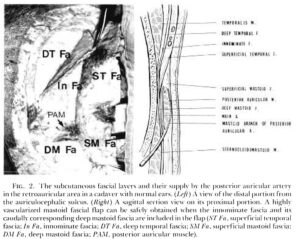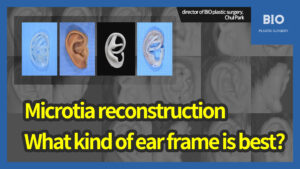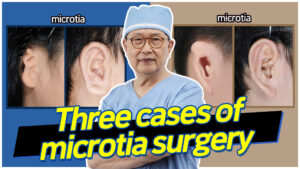microtia frame Medpore / rib cartilage for the framework

Medpore
The ear frame they used is the Medpore frame, which is getting a lot of attention these days.
It is commonly referred to as a porous polyethylene implant.
At first, Medpore was used as a bone substitute.
After that, It made it into an ar frame and used it.
In the early days, it was used as it was implanted under the skin.
In most cases, the skin was necrotic and the frame was exposed, The method implanted under the skin is not used now.
Recently, the method of covering the Medpor frame with the temporal fascia and grafting skin on it is need
In some recently published papers, the method using the Medpor frame was successful
But, since the implanted Medpor frame is a foreign substance, it camnot be said to be completely safe and durable in the long term
so this problem sometimes causes framework fracture, exposure or infection
therefore, need to be careful about this part.
as the forth ear frame method, the patient’s own chest cartilage is removed and sculpted in the form of ear cartilage for use compare to the methods introduced above, it has been used for a long time and is known as the saftest method
Rib cartilage for the framework of ear
In fact, in the 1960s, when this mothod was first introduced, only the shape of the ear helix was scalpted and implanted under the skin, making it very different from the normal shape of the ear
over the next 60 years, advanced cartilage frame sculpting methods and methods of using skin vestage
in the microtia area have made ears that are almost similar to normal ears now we believe the autogenous rib cartilage frame is the most durable and saftest material
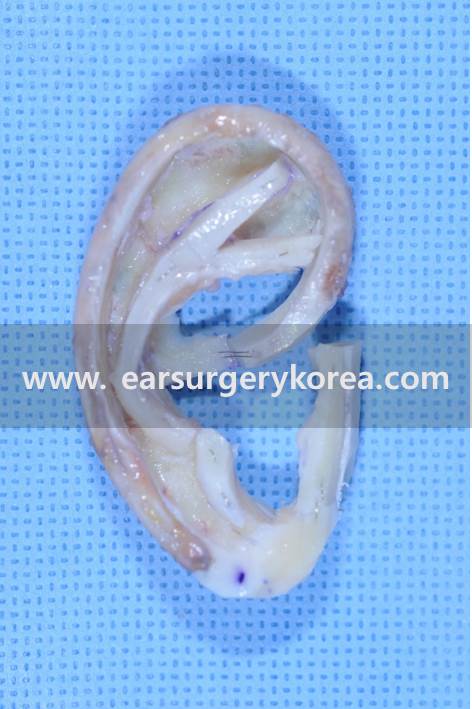
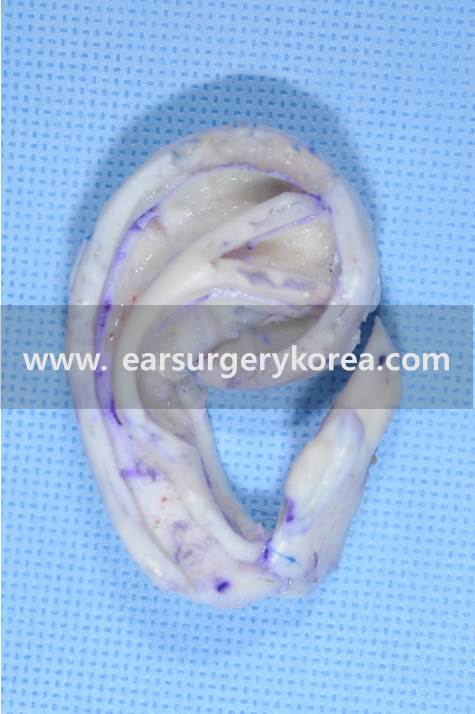

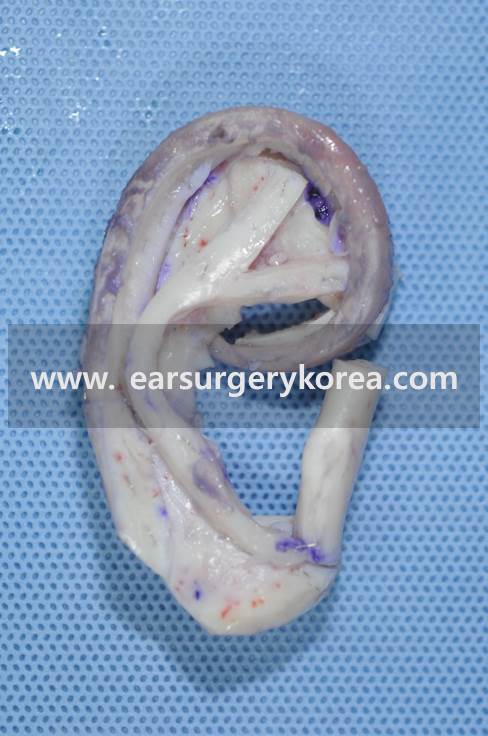
1. microtia frame Medpor:
This method utilizes a synthetic material called Medpor to create the ear’s framework. While initially popular for its convenience, it has fallen out of favor due to potential
2. microtia frame Rib Cartilage Framework:
This method uses cartilage harvested from the patient’s ribs to build the ear’s framework. While requiring more surgical expertise and patient age/maturity for recovery, it offers several advantages:
Stability:
Cartilage from the ribs provides a strong and stable foundation for the reconstructed ear, ensuring its long-lasting shape.
Reduced Risk of Complications: Autologous tissue (from the patient’s own body) minimizes the risk of rejection and infection.


